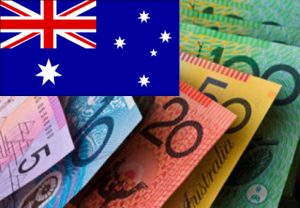Australian Dollar remains weak
23 September 2016 by News DeskAustralian Dollar to Pound continued to trend weakly on Friday morning.
 Australian Dollar to Pound quickly gave up some of its advances as Sterling sentiment waned once more, according to currency specialists TorFX
Australian Dollar to Pound quickly gave up some of its advances as Sterling sentiment waned once more, according to currency specialists TorFX
The Australian Dollar itself remained relatively weak due to profit taking on risky currencies and commodities, as investors sold assets from their highs following surges in value since Wednesday’s disappointing Federal Reserve news.
New Zealand Dollar (NZD) – The Pound to New Zealand Dollar exchange rate continued to advance from the record-low it experienced earlier in the week as markets sold off risk-correlated investments in a bout of profit taking.
Sterling was even able to advance against the New Zealand Dollar on Friday as the ‘Kiwi’ plummeted across the board.
With underwhelming dairy commodity news in the past week and the expectation that the Reserve Bank of New Zealand is likely to cut interest rates again soon in the future, the New Zealand Dollar remained among the least appealing risk-correlated currencies towards the end of the week.
Australian Dollar remains weak
Pound Sterling (GBP) – The Pound was finally able to make a more inspired movement during Thursday’s session, as the currency was boosted against most of its major rivals due to a series of optimistic statements made by Bank of England (BoE) policymaker Kristin Forbes.
In a speech on Britain’s economy since the EU Referendum in June, she stated that not only had the UK been more resilient than expected to the Brexit vote itself, but that she currently did not see a case for further monetary easing measures in the near future. Forbes reiterated that the effects of the Brexit vote going forward were still widely unknown, which she used as part of her argument against further easing until she believed it was necessary.
However, this solid sentiment towards Sterling didn’t last and the currency quickly gave up some of its gains on Friday morning as markets responded bearishly to news that foreign secretary Boris Johnson expected formal Brexit talks to begin in early 2017.
US Dollar (USD) – The Pound to US Dollar exchange rate climbed to a new weekly high during Thursday’s session as hawkish comments from BoE policymaker Kristin Forbes allowed Sterling to easily capitalise on a weak US Dollar.
The Dollar continued to trend with a negative bias throughout the day due to the Federal Reserve’s decision to leave US interest rates on hold on Wednesday. Lack of demand for the US Dollar was primarily due to the indication that 2016 would see only one rate hike of 25 basis points rather than two.
Thursday’s US data did little to inspire confidence in the ‘Greenback’ either. While jobless claims came in at their best levels in two months, at 2,133k, August home sales data continued the trend of disappointing August stats. However, Sterling was sold off due to Brexit speculation on Friday morning and as a result ‘Cable’ fell from its best levels.
Euro (EUR) – The Pound to Euro exchange rate advanced on Thursday, seemingly holding around the week’s opening levels thanks to hawkish comments made by Bank of England (BoE) policymaker Kristin Forbes. However, the pair dropped again on Friday in reaction to fresh speculation that Article 50 would be activated in early-2017.
While the Euro was able to hold its ground due to a weak US Dollar on Thursday, Sterling was able to advance more easily thanks to comments made by European Central Bank (ECB) President Mario Draghi. Draghi played up the effectiveness of negative interest rates in comments made on Thursday morning.
This didn’t have a strong effect on Euro trade as investors readjusted ahead of Friday’s anticipated Eurozone PMI reports. The Eurozone’s preliminary September PMI results were mixed, with German Manufacturing coming in above expectations at 54.3 but Services coming in well below expectations at 50.6. This dragged the Eurozone’s Services and Composite scores below expectations too, but Manufacturing remained solid across the board. French investors may have been cheered by news that French Manufacturing recovered to 49.5 rather than the expected slight improvement to 48.6.
Canadian Dollar (CAD) – Similarly to movement in the GBP/AUD exchange rate, the Pound advanced away from a monthly low against the Canadian Dollar on Thursday thanks to hawkish comments from BoE policymaker Forbes. However, Sterling was quickly weakened again on Friday morning by speculation that the formal Brexit process would begin in early 2017.
The Canadian Dollar, on the other hand, has remained relatively sturdy due to increases in oil prices in recent days. While oil prices slipped on Friday morning in profit-taking (as did other risk-correlated investments) sentiment remained solid. Oil traders now look ahead to next week’s oil producers meeting, but analysts doubt that any real progress will be made over the potential of an oil production freeze.
Disclaimer: This update is provided by TorFX, a leading foreign exchange broker, its content is authorised for reuse by affiliates.
Learn more about the Australian Dollar – Contact TorFX: Get A Quote
Want to live and work Down Under? Click here for expert help: Skilled Migration to Australia
Want to get a job Down Under? Click here for expert help: How to Get a Job in Australia
Click here for expert help with travel visas: Travel Visas to Australia
Click here for tourist information about Australia: Visit Australia


